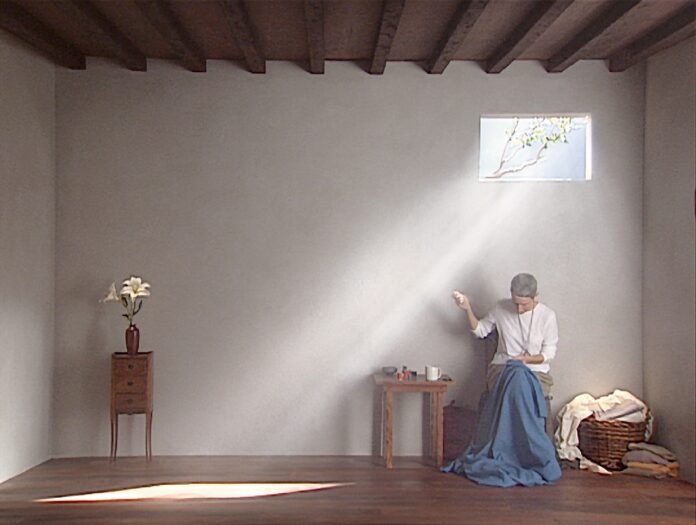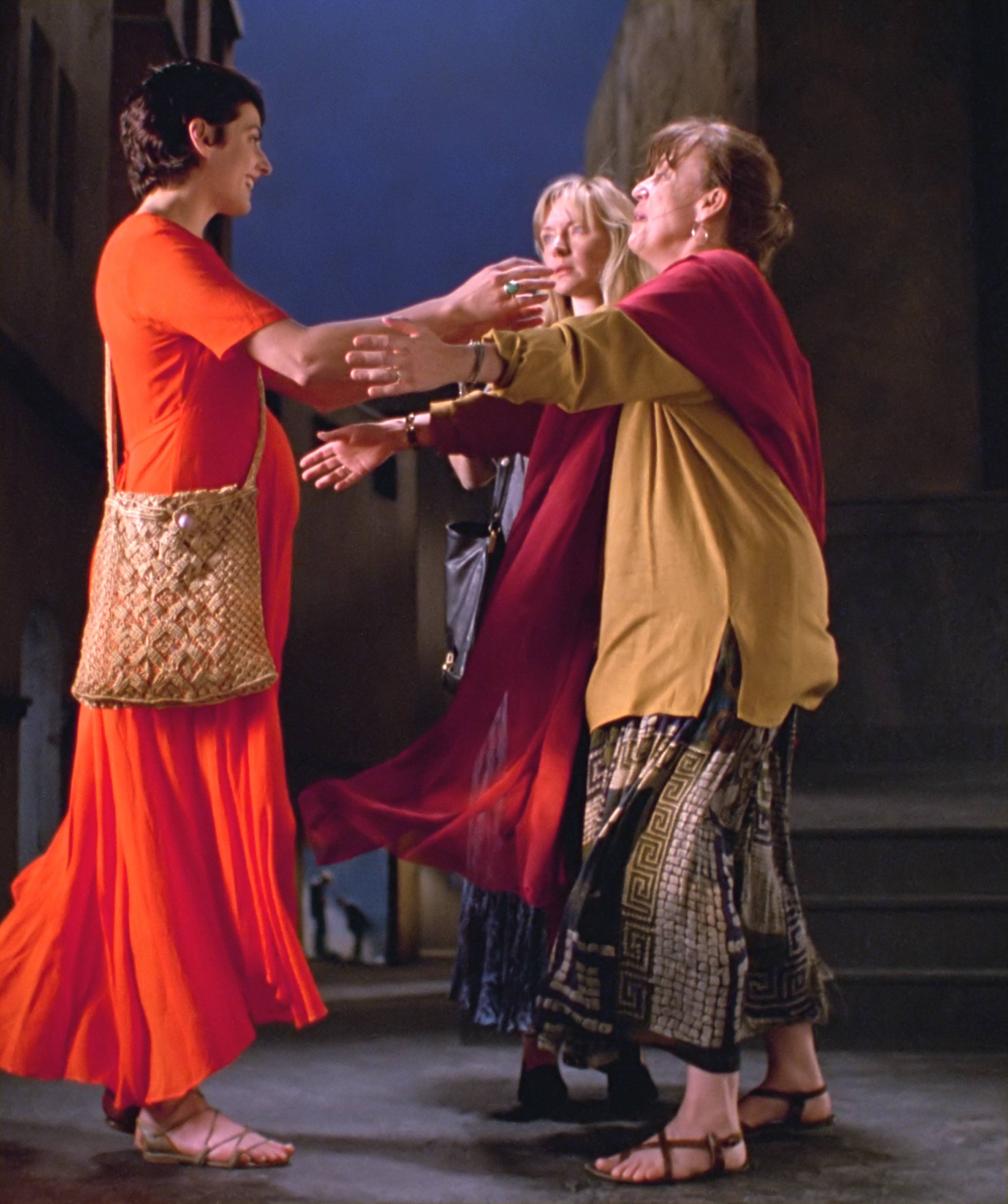
Bill Viola, the past and the present
It is challenging to exercise one’s polemical verve with a “great artist” (according to the definition of the exhibition’s curators), because great is an adjective that is always debatable: great is Pontormo, great perhaps are, in Bill Viola’s favorite subjects, Pieter de Hooch, Hieronymus Bosch, certainly Vermeer and Rembrandt, and, in the exercise of his exclusive tool, so are Beuys, Warhol, Bela Tarr and certainly Carmelo Bene.

But I didn’t mentioned the Dutch and Pontormo randomly, because the deference paid to them by Bill Viola is explicit (see the captions) as well as indubitable at a glance. And this makes the exhibition at Palazzo Reale perfect and its author, if not great, at least good, very good. In fact, one of the indispensable tasks of an artist, of any self-respecting artist, is precisely to help look at art with new eyes, to revive it, to protect it from the tide of cretins bombarding it from all sides. But there is more: a skillful and undoubtedly very bold use of the favored medium: large-format video.
Slow motion, Bill Viola’s hallmark
Meanwhile, there is a characteristic that has been evident since his first works appeared on the scene (I’m thinking of the famous dive shot in slow motion and up close, exhibited at the Venice Biennale many years ago): I am talking about the slowness, the potential of slow motion, pushed to the extreme by new digital technologies.
But I didn’t mention the Hungarian and the famous fathers of video, Warhol and Beuys, randomly, not so much because they preceded him in the use of slowness and the fixed frame (if you think about Chelsea Girls, 24Hours, the stillness of the German behind the camera that shoots him sitting in the foreground), but also because the dysfunctions of cinema, even in the author’s movies, become clear in virtue of the work of these artists. That Bill Viola takes this into account by using the potential of today’s possibilities is a merit: an artist has the specific duty to use today’s possibilities in order to take advantage of his own means. And he does it.
And then what leaves me unsatisfied?
Modern-day art shows a dangerous weakness precisely in its uncritical kneeling to avantgarde technology. Bill Viola rightly decides to pursue the obsessions that produce human spirituality, those that differentiate it from the beast, life, birth, decay, death, the unexpected event, the act of praying, but he reduces the contact with the matter/the body (in this case water and fire) to the digital.
Is this the limitation of the digital mean’s choice?
The smearing, the vulgarity, the human badness (so clear in an artist as Bela Tarr), the love of detail, the beauty of dirtiness, evident in Pelešjan’s work and, with a more than justified excess, in Carmelo Bene, the baroqueism, so important in the European culture from Borromini onward (toward which artists like Carmelo Bene and Beuys show great sensitivity) are completely absent on him. Everything is perfect, the painting marries the memory of art.
However, if I didn’t come across as overly unfair to a work that makes thinking, I would summarize with a Rococo line: “Perdrix, perdrix, toujours perdrix! Un peu de merde” (“please”, I’ll add this to Louis XIV’s quote).
Bill Viola, far rivivere l’arte
Ē impegnativo esercitare la propria verve polemica con un “ grande artista” (secondo la definizione degli autori della mostra), perché grande è un aggettivo sempre discutibile: grande è Pontormo, grandi forse lo sono, nei soggetti prediletti da Bill Viola, Pieter de Hooch, Hieronymus Bosch, certamente Vermeer e Rembrandt e, nell’esercizio del suo strumento esclusivo, lo sono Beuys, Warhol, Bela Tarr e certamente Carmelo Bene.
Ma non ho citato gli olandesi e Pontormo a caso, perché l’ossequio tributato a costoro da Bill Viola è esplicito (vedi le didascalie ) oltre che indubbio a colpo d’occhio. E questo rende la mostra a Palazzo Reale perfetta e il suo autore, se non grande, almeno bravo, molto bravo.
Infatti uno dei compiti imprescindibili di un artista, di qualsiasi artista che si rispetti, è proprio quello di aiutare a guardare l’arte con occhi nuovi, a farla rivivere, a proteggerla dalla marea di cretini che la assediano da tutte le parti. Ma c’è di più: un uso sapiente e senza dubbio molto audace del mezzo prediletto: il video a grande formato.
Il ralenti, il segno di Bill Viola
Intanto c’è da sottolineare una caratteristica evidente fin dalle sue prime opere comparse sulla scena (sto pensando al famoso tuffo ripreso al rallentatore e da vicino, esposto alla Biennale di Venezia molti anni fa): parlo della lentezza, delle potenzialità del ralenti, spinto all’estremo dalle nuove tecnologie digitali.
Ma non ho citato a caso nemmeno l’ungherese e i famosi padri del video, Warhol e Beuys, non tanto perché lo hanno preceduto nell’uso della lentezza e del quadro fisso (si pensi per es. a Chelsea Girls, a 24Hours, all’immobilità del tedesco dietro la camera che lo riprende seduto in primo piano), ma anche perché le deficenze del cinema, anche quello d’autore, diventano scoperte proprio in virtù del lavoro di costoro. Che Bill Viola ne tenga conto usando le potenzialità del mezzo odierno è titolo di merito: un artista ha il dovere preciso di sfruttare al meglio i propri mezzi. E lui lo fa.
Cosa mi lascia insoddisfatto allora?
L’arte dei nostri giorni mostra una debolezza pericolosa proprio nella genuflessione acritica alla tecnologia d’avanguardia. BV decide giustamente di percorrere le ossessioni che producono la spiritualità umana, quelle che lo differenziano dalla bestia, la vita, la nascita, la decadenza, la morte, l’evento imprevisto, la preghiera, ma assoggetta il contatto con la materia, nel suo caso l’acqua e il fuoco, al solo mezzo digitale.
Ē il limite della scelta del mezzo?
La sbavatura, la volgarità, la cattiveria umana (così pregnanti in un artista come Bela Tarr), l’amore del particolare, la bellezza della sporcizia, evidenti nell’opera del regista armeno Artavazd Pelešjan’e, con un eccesso più che giustificato, in Carmelo Bene, il barocchismo, così importante nella cultura europea da Borromini in poi (verso il quale artisti come appunto Carmelo Bene e Beuys mostrano grande sensibilità), sono in lui completamente assenti. Tutto è perfettissimo, il quadro sposa la memoria dell’arte.
Però, se non passassi per eccessivamente ingiusto nei confronti di un lavoro che fa riflettere, sintetizzerei con una battuta, datata appunto rococò: “Perdrix, perdrix, toujours perdrix! Un peu de merde” (SVP, aggiungo io a Louis XIV).
Leggi anche: Fuori dai denti / Ann Veronica Janssens at Hangar Bicocca in Milan – Una grande artista all’Hangar







